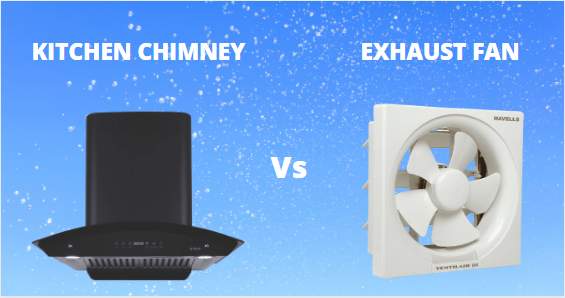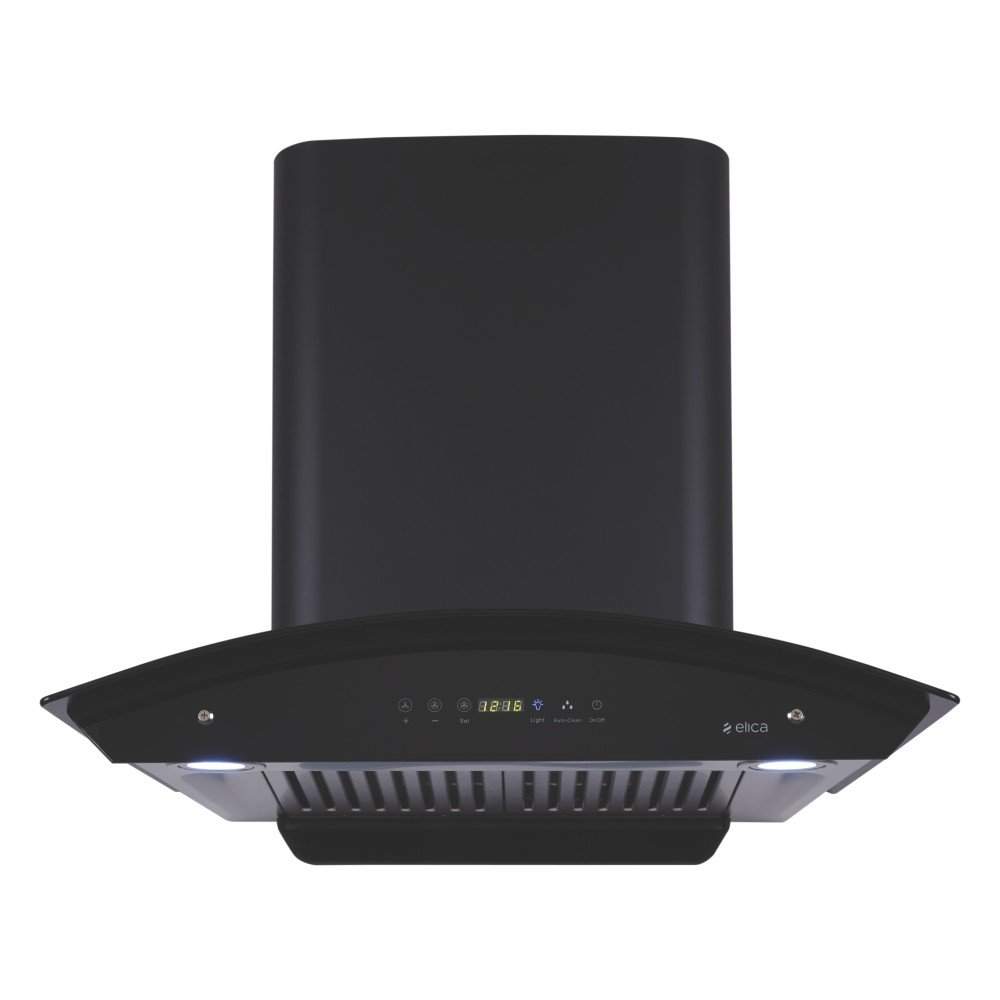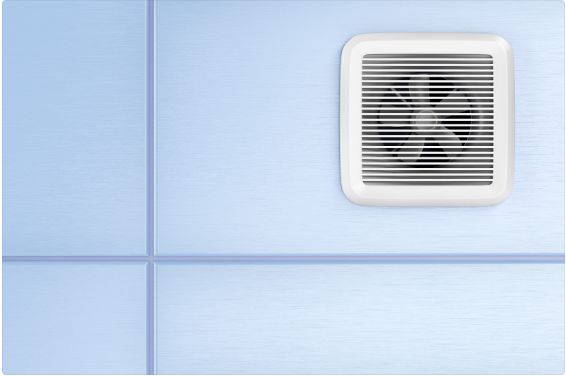Chimney Vs Exhaust fan? Sounds familiar? Well, we all have been there and faced similar confusion. However, a clearer understanding of each of these systems will offer you a better insight into what to install, if at all. Before we get into a detailed comparison, we need to take a look at what each of these systems is all about.

There is no recorded history of the ventilation system as such. But it is a well-known fact that man has forever been trying to develop a system that allows better indoor air quality. This has been a constant quest in bakeries and large-scale kitchens where fumes, grease, and oil have been a nuisance. This has led to the earliest-known ventilation systems that allowed the ‘expulsion’ of oil-infused air from the kitchen areas.
The earliest known patent ranges back to 1926 when an inventor known as Theodore R.N Gerdes applied for the patent. His invention was known as Ventilating Hood for ranges. This was a simple set-up that included a fan that caught the fumes from indoors and ‘pushed’ them out. Later a design for the Stove Hood was developed in the year 1928 by Lloyd W Ray. This was a simple hood-like design connected to the stove and was used to separate grease from the vapours and remove the hot air from beneath. In the year 1932, an entrepreneur named Henry Broan was successful in manufacturing ventilation fans. This was known as Motordor and was a huge success in offering ‘silent’ ventilation for the kitchen. Even today, the company is known as Broan-NuTone LLC is one of the leading manufacturers of ventilation systems. Today, we have a wide range of ventilation systems that comprise exhaust fans, Chimneys, and fire suppression systems. Let us take a closer look at each of the Exhaust fans and the Chimneys.
What Is A Kitchen Chimney?

Simply put, the Chimney comprises a suction motor and filters. When switched ‘on’, the grease and the smokes from the area are ‘sucked-in to the arrangement’. This is then made to pass through the filters fixed within the Chimney so that the oily particles are stuck into the filters. The smoke is filtered out and pushed through the ‘vent-like’ arrangement.
Advantages
- The design is such that it helps keep the kitchen clean along with the tiles. It also keeps the stain from the tiles.
- Is effective in sucking-out the grease, oil, vapour, and particles from the kitchen air. This helps in keeping the kitchen clean and spotless.
- Is effective in the removal of all odour from the kitchen air.
- Is good to look at and adds to the aesthetics of the kitchen decoration.
Disadvantages
- Is expensive
- Is tough to install
- Requires regular maintenance
What Is An Exhaust Fan?

In simple language, an exhaust fan is much like a ceiling fan in its design. It comprises a motor and blades attached to it. These are commonly found in the kitchen and bathrooms and are used to remove foul odours and pollutants from the indoor air. This electronic device works by sucking out the air and the heavy particles from the air and push it outside. However, the more the number of blades, the higher is the suction power. The entire set-up is mounted on a frame-work which is fixed properly onto an ‘opening’ of the right dimensions on a wall of the room.
Advantages
- An exhaust fan is small in size and comparatively portable.
- The design allows instant removal of the polluted air from the indoor air.
- This is an instant solution for improving the air quality within minutes.
- Is a cheap option in comparison.
- Is completely assembled and can be easily installed for immediate use.
Disadvantages
- An exhaust fan is noisy.
- Fixing an exhaust fan onto a wall can make the interior look unpleasing.
- Is not effective in the absolute removal of grease and oil from the indoor air.
- Cleaning and maintenance is a major task when it comes to an exhaust fan.
Difference Between Chimney and Exhaust Fan
What is the difference between a chimney and an exhaust fan? When it comes to Chimney Vs Exhaust fans, one needs a tabular evaluation of the pros and cons of each of them. Here is a comparison between the two devices and how to select them:
CHIMNEY | EXHAUST FAN |
Is effective in expelling out the grease, smoke, and bad odor | Can expel out only smoke and odor from the indoor air |
Helps reduce the cleaning in the kitchen | Does not effects the cleaning of the kitchen |
This is an expensive investment and can range from INR 10000 in India | Is on a budget and is a cheap investment with a starting price of INR 1000 in India |
Electricity consumption is 230W | Electricity consumption is 65W |
Is not noisy | Is a noisy option |
Is good to look at and improves the interior design of the kitchen space | Looks ugly |
Available in various models and designs | Are a boring design and all models are similar |
Is quite on-the face near the stove, and is within human reach | Is away from human interference |
Involves various parts and functions | Is easy to operate with just a switch of a button |
The Conclusion
So, what is it going to be? Between Chimney Vs Exhaust fan? Well, that depends upon a lot of factors:
ON A BUDGET: An exhaust fan is easy on the pocket and quite simple to install. If you require a quick-fix solution for indoor air, exhaust fan it is. An exhaust fan can be fixed immediately and offers a simple solution to improve air quality instantly. It is a simple arrangement and can be fixed almost anywhere.
FOR A SOPHISTICATED USER: If you require a good-looking air quality improvement solution, a Chimney it is. Though heavy on the pockets, the Chimney nevertheless is a great investment that can offer an excellent solution for acquiring clean indoor air in an instant. This is also a great choice when you need to maintain the cleanliness of your kitchen. Also, a Chimney is easy to maintain.